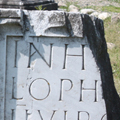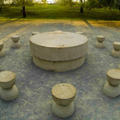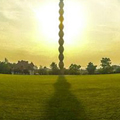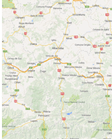In the area
From Banpotoc60, it is easy to add a holiday and recreation experience to the training or teambuilding one.
Destinations for history lovers
In the building of the Magna Curia Palace (the XVIth century), historical monument built in Renaissantist style, you can visit the Museum of Dacian and Roman civilization, where there are sheltered "pieces of history, confessions" passing step by step from the Neolithic to today's written history." Magna Curia Palace is 17 km away from Banpotoc.
The Dacian citadels (21 – 22 miles from Banpotoc) prove the high level of cultural knowledge of the Dacians. The main citadels were discovered at: Costesti (11 miles from Orastie), Blidaru (13 miles from Orastie), Piatra Rosie (18 miles from Orastie), Gradistea Muncelului (24 miles from Orastie) and Sarmisegetusa Regia (in the mountains of Orastie).
The roman citadel of Dacia Sarmisegetuza Ulpia Traiana (15 miles from Hateg) was the residence of the highest and most important imperial institutions and clerks. The city was built in 107 AD, at Emperor Traian's command.
The Colt citadel (the XIVth century), situated on a rock at 720 m height, was a source of inspiration for Jules Verne when writing his novel The Carpathian Castle.
The Corvins' Castle in Hunedoara, 17 km from Banpotoc, through its architectural beauty manages to be in the top most important monuments of feudal art in Romania and the South-East of Europe. The castle's past is mostly related to the Corvinilor family that reigned for a long time. Iancu de Hunedoara redecorated and modified it (1446-1453), organizing the "Knight's hall" and "The Clergical hall"… . Renewed in the next centuries, the castle unites the gothic style with elements characteristic to the Renaissance or the baroque style.
The citadel of Deva, 20 km from Banpotoc, was raised in the XIIIth century on a volcano cone that dominates the city from a184m altitude. It is documented to have been one of the most powerful citadels in Transylvania. It can be accessed by foot or by funicular.
The memorial museum "Aurel Vlaicu", 29 km from Banpotoc, is dedicated to the memory of the pioneer of Romanian aviation. It represents the place of his birth and also the place where he built his first aero models.
The historical museum of mining – in Brad (40 km from Banpotoc) hosts an interesting collection of minerals, including gold.
Destinations for nature lovers
Nature lovers can start their journey in the Banpotoc village. A 10 km trail from here to Varmaga village, by foot or by bicycle, along the Mures river, offers beautiful views and the opportunity to do bird-watching.
The Dendrological Park in Simeria, hosting a collection of 550 species of wooden and exotic plants from all over the world, is another natural attraction, only 10 minutes away by car. The park covers 148 acres.
In the Retezat National Park peaks of over 2500 m, with 80 glacial lakes and wild landscapes, are waiting to be conquered by adventurers,
The Gardistea Muncelului-Ciclovina Natural Park (64 km South of Banpotoc) offers a number of great hiking trails with access to fantastic caves.
Exploring Transylvanian old cities
From Banpotoc, guests can easily get to:
Sibiu (98 km) – one of the most important cultural centres of Romania, which along with the city of Luxembourg, was designated a European Capital of Culture for the year 2007. Formerly the centre of the Transylvanian Saxons, the old city of Sibiu was ranked as "Europe's 8th most idyllic place to live" by Forbes.
Alba Iulia (50 km) - a city located near the site of the important Dacian political, economic and social centre of Apulon, Since the High Middle Ages, the city has been the seat of Transylvania's Roman Catholic diocese. Between 1541 and 1690 it was the capital of the Eastern Hungarian Kingdom and the latter Principality of Transylvania. Alba Iulia is historically important for Hungarians, Romanians and Transylvanian Saxons.
Pilgrimage to religious buildings
• The Ortodox Church in Strei – 6 miles
• The Prislop Monastery – 12 miles to Hateg
• The wooden church in Almasu Mic – 3 miles
• The "Sfanta Fecioara" reformed church in Santamaria Orlea
• The citadel church in Colt
• The stone church in Densus is a unique monument in medieval Romanian architecture, having been build probably during the 13th century
• The ortodox church in Ostrov, built in the 14th century, with one mural painting from the 1365.
These churches can be visited in only one day following this track:
Banpotoc-Simeria-Hunedoara - Calan, Streisângiorgiu - Strei - Sântamarie Orlea - Nucsoara - Suseni, Cetatea Colt - Ostrov - Pesteana - Densus - Hateg - Prislop – Hunedoara-Simeria –Banpotoc
Following Brancusi's tracks
Take the mountain paths to the travertine quarry in Banpotoc, from which the great sculptor chose his materials for The Gate of the Kiss and The Table of Silence (that can be visited in Targu Jiu, 150 km South of Banpotoc).
Visit the birthplace and memorial house of Constantin Brancusi: Hobita
Stone scrabbling/ carving classes can be organised by our partners in Banpotoc upon request.






















